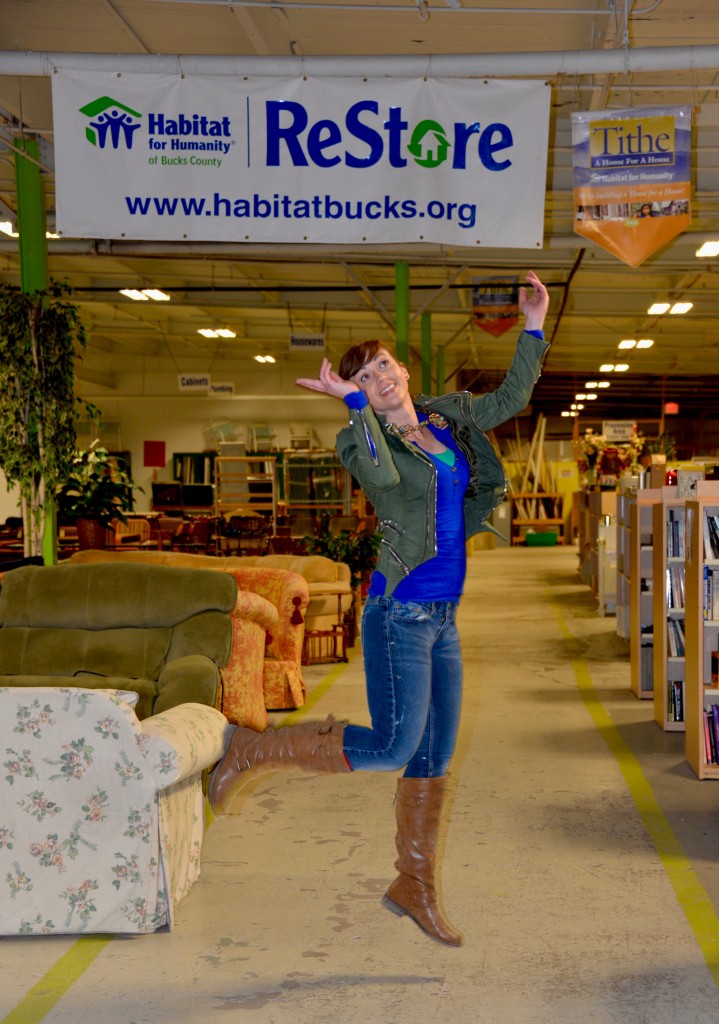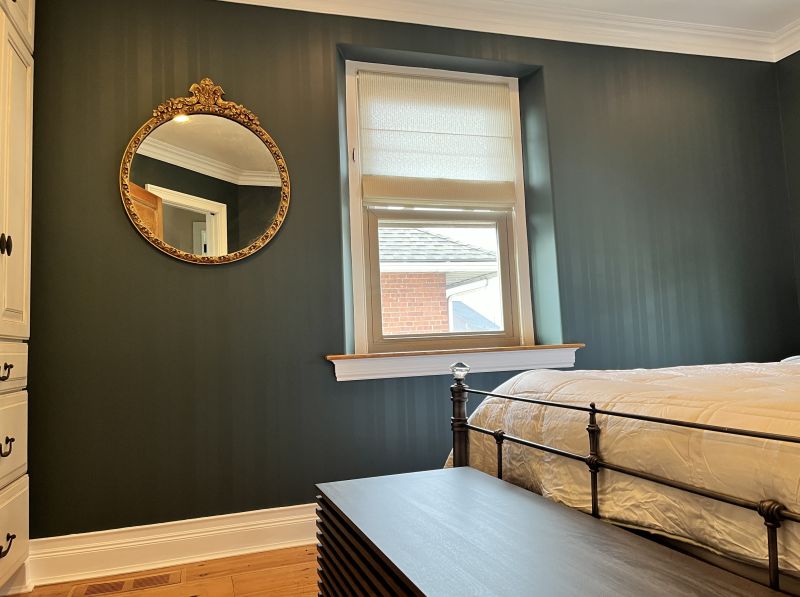
Most of us spend the bulks of our waking hours juggling never-ending responsibilities while trying to keep our families as healthy and happy as possible. Between commuting, family, work deadlines, social obligations, and attempts at a fitness and beauty routine, home maintenance can feel like another huge item on an already toppling to-do list. But what if your home décor actually worked for you instead of against you? Sounds good, right? Well, let’s talk about how to make your home decor as low-maintenance and stress-free as possible.
1. You are busy—Your home decor should not add chaos
Before we get into the nitty-gritty of material choices and paint colors, let’s acknowledge one fundamental truth: Simplicity is your new best friend. One of the most common mistakes people make when decorating is assuming that more stuff equals more style. The result? A house that looks like a cross between an arts-and-crafts garage sale and your great aunt’s knick-knack museum. (We don’t want Victorian-era decorating goals.) Not only does this approach pile on the clutter, but it also piles on the work—more surfaces to dust, more items to straighten, more potential hiding spots for random Lego pieces.
Instead, think minimal but meaningful. That doesn’t mean living in a stark, white, no-personality home decor zone. It just means carefully picking each piece for its utility, its aesthetic charm, and how easy it is to maintain. Because, let’s be real: all the beautiful tchotchkes in the world won’t make up for the mountain of guilt you feel when you have no time (or zero desire) to maintain them. So, as we embark on this home decor odyssey, keep chanting: Function first, then flair. Or, in plain English: If it’s not going to serve you well (and look good doing it), it probably doesn’t belong in your life. And stop feeling guilty about letting things go that don’t serve you.
2. Embrace easy-to-wash everything.
We live in an age where advanced technology can 3D-print a house. We can also pick a sofa fabric that can survive an encounter with your cat’s fur or your kid’s juice box fiasco. It’s called performance fabric. These days, furniture manufacturers are using stain-resistant, durable textiles. They can handle spilt coffee, sticky toddler fingers, and even your cousin’s catastrophic red wine tumble at Thanksgiving dinner.
Washable Slipcovers
For the more accident-prone among us (that’s basically all of us, right?), washable fitted slipcovers might be the single greatest invention since Wi-Fi. You can still invest in a stylish sofa or chair. Just protect it with a machine-washable cover that you can take off in a jiffy and throw in the laundry. Boom—stain problem solved. Slipcovers also give you the freedom to change up your color scheme whenever you get bored. Think of it as a fashion makeover for your furniture, minus the hefty price tag.
3. Ditch high-maintenance surfaces.
Some surfaces attract dust and fingerprints like there’s a special magnet hidden inside them. High-gloss black furniture and home decor, I’m looking at you. Sure, it might look sleek in the showroom. But the minute your golden retriever sneezes in its general direction, it will appear as though you’ve been neglecting your housekeeping for the past century.
Matte or Satin Finishes
While flat paint hides any imperfections, and it’s great for historic homes that aren’t occupied by busy families and pets, it’s easier to opt for matte or satin finishes in paint, cabinets, and furniture. These are more forgiving with everyday smudges and dust. Gloss has its appeal, but be prepared for the never-ending cycle of wipe-downs if you go for that modern reflective look. Let’s face it: unless you have a personal cleaning crew hiding in a closet or time to regularly touch-up paint, it’s just not worth the hassle.
Avoid Extra Glass
Glass tables, shelves, and cabinet fronts might look fancy, but they also show every streak, fingerprint, and crumb. It’s the home decor equivalent of wearing white jeans to a tomato sauce festival. Instead of shine from glass, choose items made from metal. Metallics give an upscale vibe with less stress. If you do choose glass, keep a microfiber cloth within arm’s reach at all times, because you will need it.
Removable Wallpaper
If you have kids or commitment issues (looking at you, folks who can’t decide on the perfect paint color), removable wallpaper is a godsend. It’s a stress-free way to add personality without the dreaded fear of “What if I hate it in six months?” Because let’s be honest: we’re moody, we evolve, and our walls should be allowed to as well.
4. Simplify with clever storage for home decor.
Storage is the hero category of home decor. When done right, it not only keeps your stuff organized but can also look downright stunning.
Built-In Bookshelves
Who doesn’t love a gorgeous built-in bookcase lining the living room wall? A built-in is your chance to create a design statement while also giving your books, photos, and miscellaneous knick-knacks a proper home. Pro tip: Use baskets or decorative boxes to hide the not-so-aesthetically-pleasing items like TV remotes, chargers, or that random stash of old receipts you’ve been meaning to sort.
Multi-Functional Furniture
If you’re short on space (or simply like to keep things streamlined), consider pieces that do double-duty. Ottomans with hidden storage compartments, benches that open up to stash blankets, and coffee tables with drawers are so helpful, especially in a household with kids.
Go Vertical
When in doubt, look up. Walls aren’t just for paint and the occasional piece of artwork. You can install shelves, hooks, and rods to utilize vertical space for everything from pot lids in the kitchen to keys in the entryway. The less stuff that ends up on the floor or countertops, the more likely you’ll be able to maintain some semblance of order.
5. Pick floors that don’t fight the spills.
Carpet? In a busy household with kids, pets, or even wine-loving adults, that’s basically a horror movie waiting to happen. Sure, plush carpet can feel incredible underfoot, but unless you have a strict “no food, no drink, and definitely no living creatures” policy in certain rooms, expect heartbreak by way of permanent stains and questionable odors.
Easy-Clean Materials
Hardwood, laminate, and vinyl floors are far easier to mop up after a cereal avalanche or a dog’s muddy paw parade. You can also find tile in designs that mimic the look of wood but offer more durability for high-traffic areas or wet zones like kitchens and bathrooms. If you’re upgrading your floors, you might consider reaching out to your local flooring company for guidance on the latest scratch-resistant, spill-proof options. Because let’s face it: the floor in a well-lived-in home sees more drama than a reality TV show marathon.
Rugs That Can Take a Beating
If you still want that cozy feel under your feet, go for rugs that are easy to wash or at least easy to spot clean. Look for indoor-outdoor rugs or machine-washable styles that can withstand the daily circus of traffic. That way, you won’t have a meltdown every time someone dares to step on your beloved rug with slightly wet socks.
6. Choose furniture that’s not a pet hair magnet.
Did you know there are fabrics out there that practically slurp up pet hair the minute Fluffy the cat so much as looks in their direction? Microfiber can be both your best friend and your worst enemy, depending on its weave. Some versions repel hair nicely, while others gather it like a competitive hair-collecting champion.
Leather (Real or Faux)
Leather sofas and chairs can be wiped clean with relative ease, and pet hair doesn’t cling to them the same way it does to cloth-based materials. If the price of real leather makes you hyperventilate, consider good-quality faux leather. Just make sure your cat isn’t a champion scratcher, or it’ll look like someone took a cheese grater to your brand-new couch.
Performance Weaves
We mentioned performance fabric earlier, but it’s worth emphasizing for pet owners. There are plenty of brands that specifically market their upholstery as pet-friendly, which usually means it’s resistant to stains, odors, and claw snags. Do a little research to find the best fit for your furry family members, and enjoy the sweet relief of not vacuuming your couch cushions every-other hour.
7. Include lighting that saves your sanity.
Sure, lighting sets the mood and can totally transform a space—but it can also be a big ol’ headache if you pick fixtures that accumulate dust and need constant cleaning or complicated bulb replacements.
Avoid Dust-Catching Chandeliers
Or at least skip the ones with 3,247 dangling crystals that require a scaffolding setup just to clean. Drum shades, flush mounts, or simple pendant lights are more straightforward to maintain. They can still be stylish—just less of a nightmare when you want to remove cobwebs or swap out a light bulb.
Smart Bulbs & Motion Sensors
You know that feeling when you have a basket full of laundry in one arm, a toddler latched onto your leg, and you’re desperately trying to flip a light switch without dropping everything? Smart bulbs and motion sensors can be lifesavers. They might also save you a couple of bucks on your electric bill, because your forgetful teenager won’t leave every light in the house on 24/7.
8. Select color palettes that hide instead of highlight.
Let’s talk color. It’s tempting to paint your living room walls a pristine eggshell or bright white. It looks oh-so-magazine-ready for about five minutes—until someone smears sticky fingers all over it. Darker or more neutral colors can be far more forgiving, especially in high-traffic areas.
Grays, Taupes, and Greiges
Neutrals might seem bland, but they’re actually design chameleons. They let you go wild with accent home decor while also hiding everyday scuffs and smudges. Bonus: if you change your style in a year, neutrals are far easier to complement than a screaming hot-pink wall.
Patterned Surfaces
It might sound counterintuitive, but a subtle pattern on your walls or floors can camouflage dust and minor stains better than a solid color. We’re not saying you should wallpaper your living room in psychedelic stripes—just consider gentle textures or patterns that can help mask the inevitable smudges of life.


